 |
| Van Phong-Nha Trang Expressway Component Project - Photo: VGP/Tran Manh |
Take advantage of every opportunity to achieve the highest possible growth
Sir, in the context of the IMF just lowering its global growth forecast and the growth forecast of major partner economies in 2025, how do you assess the possibility of Vietnam achieving its GDP growth target of 8% or more this year - when the Vietnamese economy still depends heavily on exports?
Dr. Nguyen Bich Lam: In 2025, Vietnam's economy will take place in a world context of many uncertainties: geopolitical conflicts, escalating trade wars, high interest rates, and declining global consumption and investment. The IMF has lowered its global growth forecast to 2.8%, and at the same time forecasted global trade growth this year to only reach 1.7%, down 1.5 percentage points compared to last year. Vietnam's major partner economies such as the US and China have all had their growth prospects downgraded.
In that context, the possibility of Vietnam achieving the GDP growth target of 8% this year is a big challenge, because our economy depends heavily on exports, while domestic consumption demand is still weak. I think that striving for GDP growth of 8% or more should be understood as an orientational goal, demonstrating our determination and we need to make the greatest effort, making the best use of resources to achieve the highest possible growth rate in the current objective reality.
Regarding the forecast of import-export growth, it is currently difficult to give an exact figure due to the unclear situation of reciprocal tariff policies between the US and its partners. However, the import-export picture in the first quarter of 2025 still retains a bright color scheme: export turnover reached 102.8 billion USD, up 10.6% over the same period last year. However, it should be noted that exports still depend heavily on the FDI sector, and some agricultural products have recorded a decline.
According to assessments, it will be difficult to achieve double-digit import-export growth this year. Some international organizations such as ADB forecast that Vietnam's import-export growth could be around 7%, but I think that forecasting at this point is too early. Therefore, the Government is making efforts to negotiate, respond, and support businesses to maintain export momentum and overcome global trade challenges.
In your opinion, what efforts are needed to maintain exports in the context of increasing global uncertainties?
Dr. Nguyen Bich Lam: I think that to maintain export momentum in the context of global trade uncertainty, Vietnam needs to synchronously deploy many solutions. In particular, strengthening negotiations to minimize the adverse impacts of reciprocal tariff policies, especially for the US market - Vietnam's largest export market. With a skillful economic diplomacy strategy, we need to proactively negotiate and properly handle tariff issues and non-tariff trade barriers.
Along with that, effectively exploiting signed FTAs to expand the market, compensating for possible decline in exports from the US market. Enterprises and industry associations need to prepare various response scenarios, seek new markets, and diversify export products. In addition, it is necessary to shift the structure of export goods towards increasing the proportion of deeply processed products and high-tech products.
In particular, it is necessary to focus on developing service exports such as tourism, transportation, and banking and financial services. In the first quarter of 2025, Vietnam's service exports reached about 7.58 billion USD (up 21.7% over the same period last year), showing great potential. I would like to emphasize that it is necessary to reduce the service trade deficit - a situation that has existed for many years. Reducing the service trade deficit is an issue that needs due attention, because according to calculations, if the service trade deficit can be reduced by 10%, GDP will increase by 0.36%.
In addition, the Government needs to implement measures to support businesses in improving their competitiveness, improving the business environment, and screening FDI to avoid "disguised" situations and fraudulent exports of origin that cause damage.
With a proactive and flexible spirit, I believe that Vietnam will gradually overcome difficulties and continue to maintain its position in the global supply chain.| A notable point about foreign investment capital in Vietnam in the first quarter of 2025 is the very high number of newly registered projects, with 850 licensed projects, an increase of 11.5%; however, the registered capital reached 4.33 billion USD, a decrease of 31.5%. The average registered capital of an FDI project is only 5 million USD, showing that there are many small-scale FDI projects. The Government and localities need to carefully review and screen FDI projects to eliminate investors coming to Vietnam to hide and avoid the trade war. |
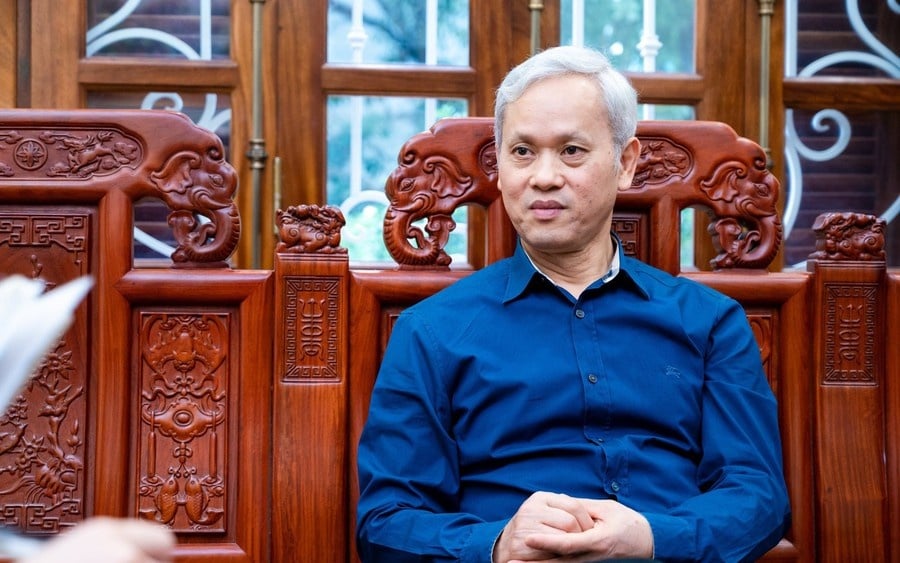 |
| Dr. Nguyen Bich Lam |
Policy pillars to prioritize
So, in your opinion, which policy pillars should be prioritized to create room to support growth in the context of weakening global demand?
Dr. Nguyen Bich Lam: In the context of many global challenges, to create room to support economic growth, Vietnam needs to prioritize the synchronous implementation of a number of key policy groups as follows:
First, promote public investment. Public investment will continue to play a key role in the economy's growth in 2025, especially in the context of slow consumption recovery. Total public investment in 2025 is VND825.9 trillion; if disbursement reaches 95%, GDP will increase by 1.07 percentage points, and if disbursement reaches 100%, it will increase by 1.4 percentage points.
In addition, I am also impressed with the fact that the Government will resolve the backlog of projects, regardless of where the capital comes from, in order to free up resources for the economy. Through review and synthesis, up to now, there are 2,212 stuck projects, mainly domestic private investment projects, public-private partnership projects and about 20% of public investment projects, causing backlog and huge waste of resources and land that need to be urgently resolved, put into use, increase investment motivation, and contribute to achieving the growth target.
Second, promote private investment and FDI capital. Private investment accounts for about 50% of total social investment capital, so each percentage point of growth in private investment will contribute greatly to overall growth. Therefore, it is necessary to remove legal barriers and improve the business investment environment to stimulate capital flows from the non-state sector.
Third, stimulate domestic consumption. Final consumption is the biggest growth driver of the economy. It is necessary to implement synchronous solutions such as: reducing personal income tax, increasing family deductions, continuing to reduce VAT for a longer period of time, reducing transportation service prices to stimulate tourism, and increasing promotional programs "Vietnamese people prioritize using Vietnamese goods".
Fourth, implement expansionary fiscal and monetary policies cautiously. Monetary policy has been loosened to lower interest rates and support businesses. However, it is necessary to operate flexibly and coordinate closely between fiscal and monetary policies to control inflation, stabilize exchange rates, and ensure the major balance of the economy.
Fifth, develop new growth drivers. Innovation, science and technology, national digital transformation, digital economy development, green economy, and circular economy need to be promoted. These will be long-term drivers to help Vietnam improve productivity and competitiveness.
With such proactive and synchronous policies, we have reason to believe that Vietnam's economy will overcome difficulties and achieve the highest possible growth rate this year.
In your opinion, what are the long-term reforms that Vietnam should promote starting this year to strengthen the foundation for sustainable growth?
Dr. Nguyen Bich Lam: To strengthen the foundation for sustainable growth, I think it is necessary to proactively implement the following long-term reforms:
First, institutional reform. It is necessary to continue to improve the legal system, ensure stability, transparency and openness, and eliminate overlaps and conflicts between legal documents. Modern institutions are an important premise to promote innovation, improve the business environment and attract investment.
Second is to restructure the economy, restructure the internal industry and innovate the growth model towards promoting the development of new economic sectors in line with world economic trends, developing digital economy, green economy, circular economy, creative economy, sharing economy, emerging industries and fields such as: Artificial intelligence, big data, cloud computing, new energy. At the same time, promote the application of new technology, improve labor productivity, gradually reduce dependence on industries that use a lot of resources and cheap labor.
Third, building a modern and effective national governance state.
The State needs to shift from a heavily subsidized administrative management model to a development-creating model that serves businesses and the people. It is necessary to strongly implement decentralization and delegation of power, apply the principles of practical, transparent governance and save public spending.
Fourth, developing the private economy into the most important growth engine. It is necessary to build a strategy to develop strong national enterprises, promote entrepreneurship and innovation in the private sector. The role of the private economy needs to be promoted, becoming the country's leading growth engine and creating national prosperity.
I believe that with the current strong determination to reform, Vietnam will build a solid foundation, helping the economy not only cope with short-term challenges but also grow rapidly and sustainably in the medium and long term.
Source: https://thoibaonganhang.vn/ap-luc-lon-hon-can-no-luc-cao-hon-163584.html



![[Photo] Ha Giang: Many key projects under construction during the holiday season](https://vphoto.vietnam.vn/thumb/1200x675/vietnam/resource/IMAGE/2025/5/1/8b8d87a9bd9b4d279bf5c1f71c030dec)


![[Photo] Binh Thuan organizes many special festivals on the occasion of April 30 and May 1](https://vphoto.vietnam.vn/thumb/1200x675/vietnam/resource/IMAGE/2025/5/1/5180af1d979642468ef6a3a9755d8d51)






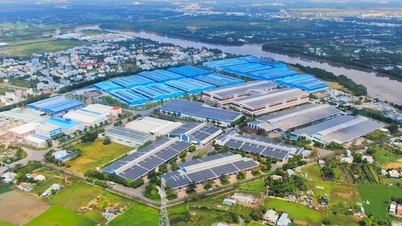






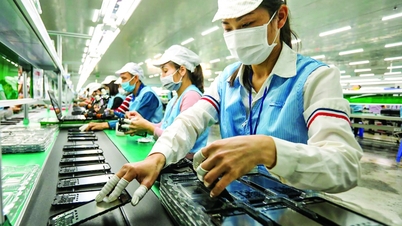



![[Photo] Feast your eyes on images of parades and marching groups seen from above](https://vphoto.vietnam.vn/thumb/1200x675/vietnam/resource/IMAGE/2025/4/30/3525302266124e69819126aa93c41092)





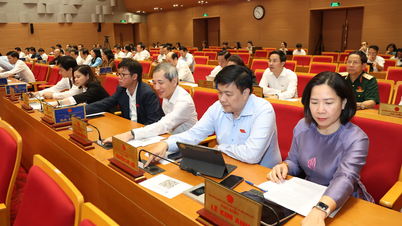
























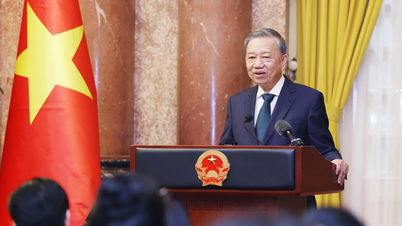
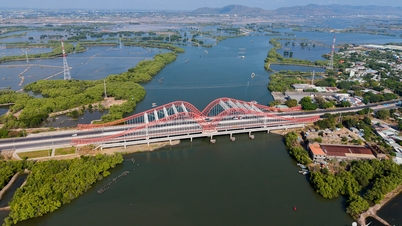





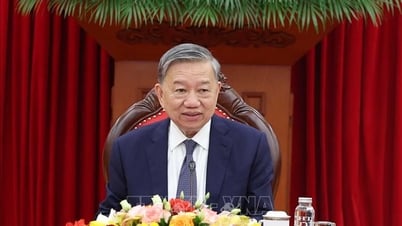































Comment (0)